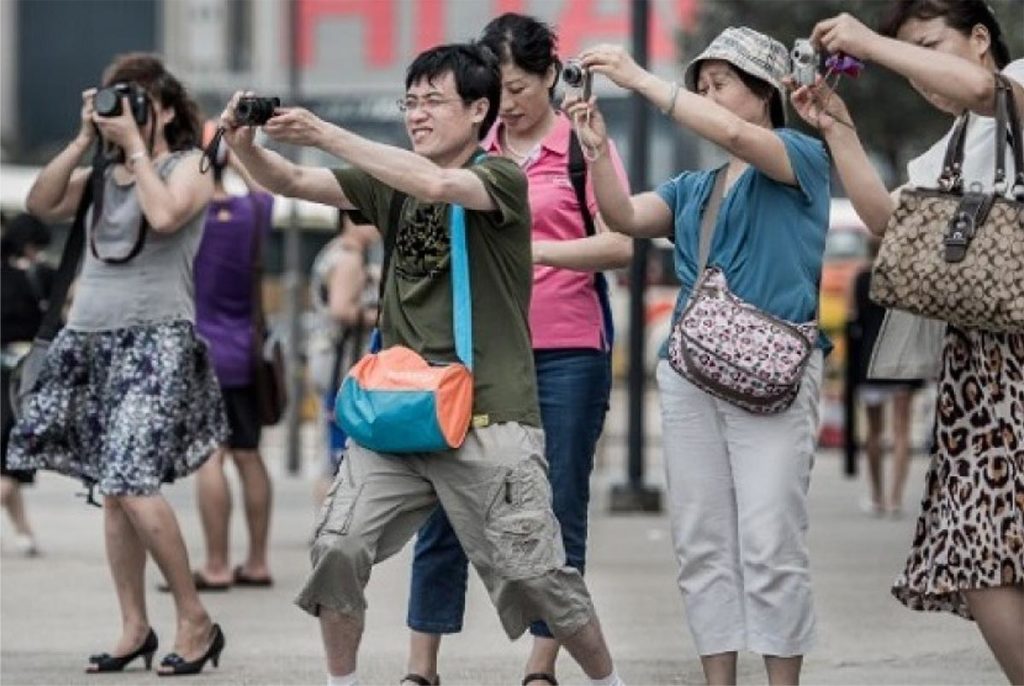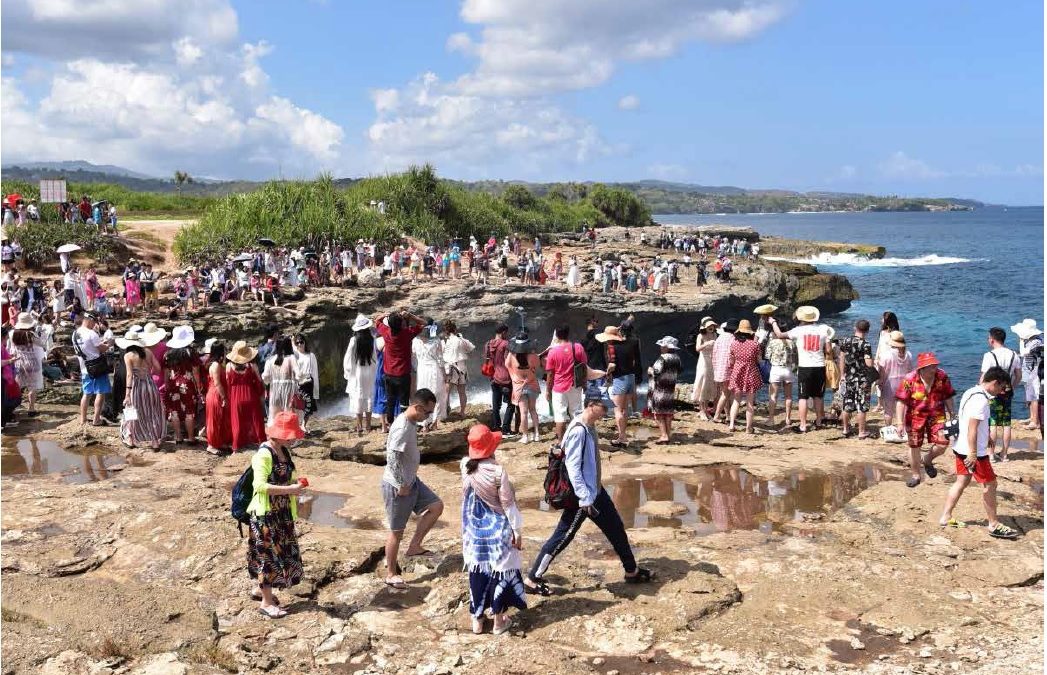Caption: Higher arrivals spell greater revenues – but can Indonesia handle the growth? This and other pressing issues and opportunities will be tabled at the Indonesia Economic Forum 2019
As the last rays of the sun stretch across the beaches of Legian, Bali’s dynamic beach life is starting to wind down for the day. Paris Gunawan gives his group of Chinese tourists one last chance at their photo frenzy before shepherding them to the bus that will take them to a Chinese restaurant for dinner.
Over the past few years, the influx of Chinese tourists into Bali have dramatically altered the lives of young Indonesians such as Paris who have seen their incomes and livelihoods improve. Paris once got by selling DVDs on Legian beach but now he operates a minivan than ferries tourists around Bali.
“With more and more Chinese tourists coming to Bali, I am currently doing two to three trips a day and sometimes I have to ask my friends to help me when I cannot manage,” he tells IEF Insights.
Paris is planning to buy one more minivan and hire an additional driver if business continues to grow.

Bali has also experienced a surge in hosting weddings and corporate travel from Chinese companies, particularly multi-level marketing firms. According to some sources, there are as many as 150 Chinese weddings held in Bali a month, with one venue hosting six weddings in a day.
For Asta Siswanto, Director of Taman Bhagawan in Sanur, business from Chinese companies has picked up over the past couple of years. Taman Bhagawan is a major venue for large corporate events that has seen requests from Chinese multi-level marketing companies from second and third tier cities pick up.
“We have hosted companies and brands we have never heard of and each event can range between 500 and 1,200 people,” she told IEF Insights. “Many of them just replicate what has been done by other companies.”
Bali was one of the world’s most visited “cities” in 2018 according to an annual index published by MasterCard, which estimated more than 8 million international visitors came to the Island of the Gods last year.

The island is ranked 19th on this year’s Global Destination Cities Index. According to the report, Bali had an estimated 8.26 million international visitors in 2018, just slightly ahead of Hong Kong, which welcomed 8.23 million international visitors last year.
The index estimates that the average length of stay in Bali is 8.6 days, with USD 125 (IDR 1.7 million) being the average amount spent daily by international tourists.
According to MasterCard’s latest report, which is based on data from 2018, Bali’s top 3 origin markets for international overnight arrivals are China, Australia and India, accounting for 22.4%, 19.3% and 5.8% share of international arrivals respectively.
Chinese Wanderlust: 15 To 20 Times Growth
Tourism is one of the fastest growing sectors of the global economy, accounting for 10% of global GDP and 9% of total employment. The World Travel and Tourism Council estimates that the total impact of travel and tourism on global economic output will reach US$9.2 trillion by 2021.

The fastest growing G20 countries for total Travel & Tourism GDP to 2026 will be China, India, Indonesia, Mexico and South Africa. Chinese outbound travel is the new global powerhouse for the sector – representing 15 times growth, with nearly 150 million overseas trips made by Chinese residents. Twenty years ago, this number was a mere 10 million.
According to the United Nations World Tourism Organization, Chinese tourists overseas spent US$227 billion in 2018, up from US$10 billion in 2010. American globetrotters on the other hand spent US$144 billion in 2018.
Taken in such context, President Joko Widodo’s push to improve tourism infrastructure and increase tourist arrivals makes perfect sense. The government has an ambitious target of 20 million tourist arrivals in 2019, up from 14 million in 2017.

Growing the 10 Balis: Dream or Reality?
With other major sectors of the economy such as manufacturing and natural resources facing downturns, Indonesia will need the tourism sector to pick up the slack to ensure sustainable GPD growth. As such, the government is looking to replicate the attractiveness of Bali as a tourist destination, identifying 10 New Balis, that it hopes to develop and promote. Not surprising as tourism offers a multiplier effect which touches many sectors of the economy including hotels, restaurants, agriculture, transportation and the environment.
While Indonesia’s competitiveness as a tourist destination improved from 70th in 2013 to 42nd in 2017, according to the World Economic Forum’s Travel and Tourism Competitiveness Index, the country lags behind its regional competitiveness in a number of areas, especially those related to infrastructure and environmental sustainability, according to an OECD report titled “Making the Most of Tourism to Promote Growth.”
If the Indonesian government hopes to increase the tourism sector’s contribution to the country’s GDP, it must improve tourism-related infrastructure, which remains in poor condition. According to the WEF 2017 report, tourist service infrastructure was the worst performing area in its analysis of Indonesia’s tourism industry. With a score of 3.1 out of seven, Indonesia ranked lower than Kenya and only slightly better than Venezuela.
A surge in tourist numbers would also put pressure on the existing infrastructure, local communities and cultural and environmental assets.
Thailand, for example has passed regulation to curb zero dollar tourism where foreign players take the lion share of the business. This is especially prevalent with Chinese tourists as they arrive on chartered planes and Chinese tour agents control all onshore activities.
As such, more money can flow to local governments and businesses as higher tourist numbers spells greater futures and fortunes for the likes of Paris Gunawan for some time yet.
How can the corporate and public sector work hand in hand to benefit from the tourist boom, while ensuring the sustainability of communities and local businesses related to the tourism sector? What reforms are needed to shift Indonesia further up on the competitive ladder?
Find out more at the Indonesia Economic Forum 2019.

